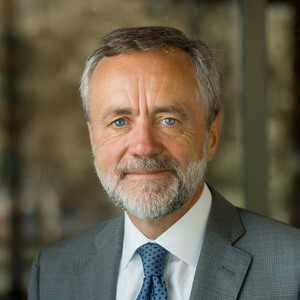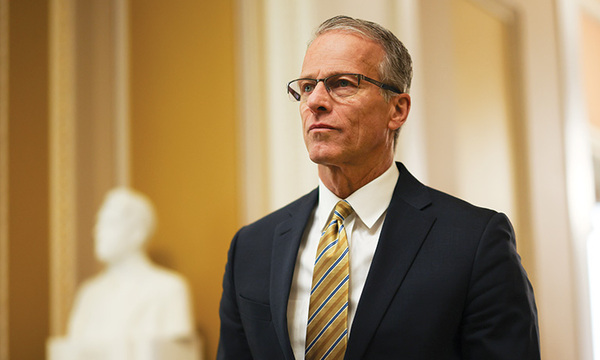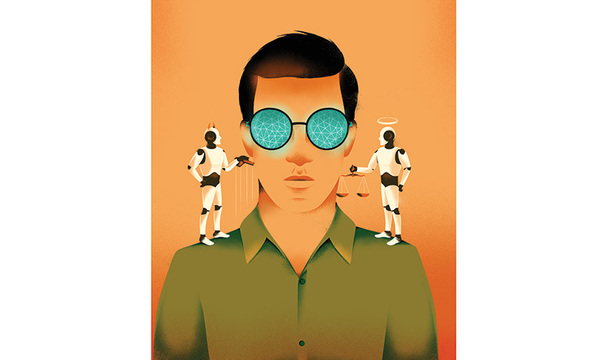A ║┌┴¤└˙╩Ě facility administrator, Ken Bascom, had an idea 29 years ago. Before Sam Sutherland ÔÇö BiolaÔÇÖs president from 1952 to 1970 ÔÇö could no longer recall his vision for Biola, Ken decided to ask him some questions and record them on a cassette tape. IÔÇÖm so glad he did.
The questions he asked Dr. Sutherland in 1982, 12 years into his retirement, were about BiolaÔÇÖs growth. Particularly, Ken wanted to chronicle this former presidentÔÇÖs dreams for how big Biola would ever get. Here is a transcript of part of that conversation, a recording I first heard just a few months back:
Ken Bascom: What was the scope of your vision for the size of Biola in the future? You had around 700 students at that time?
Sam Sutherland: Yes.
Ken: And what was in your mind ÔÇŽ your glorious dreams for how many students weÔÇÖd have out here?
Sam: I thought that we would have a student body of around 1,800. In my wildest dreams, I anticipated maybe a student body of around 2,500, but that was two generations hence. I thought if we could build the student body to 1,800, that would be optimal. ÔÇŽ Ed LeClair, he was on the [La Mirada City] Council, and he asked me that same question. He said, ÔÇťDr. Sam, what do you envision the ultimate student body of Biola?ÔÇŁ and I gave my wild idea, ÔÇť2,500 students.ÔÇŁ I thought I might as well aim high. And he sat and looked at me and said, ÔÇťWhat are you going to do when 6,000 students come knocking at your door?ÔÇŁ I said, ÔÇťWhoa. By that time, IÔÇÖll be long gone to glory. I donÔÇÖt care what happens!ÔÇŁ Well, he had a bigger vision than I did.
That city councilman believed that this school had the capacity to double some of Dr. SutherlandÔÇÖs most ambitious projections. And he was right. This year we surpassed 6,000 students for the first time in our 103-year history. And Dr. Sutherland was indeed in glory when that predicted marker was crossed. By GodÔÇÖs grace ÔÇö and not without a fair amount of adjusting ÔÇö our enrollment in 2010ÔÇô11 is 6,123. That question asked 29 years ago has finally been answered.
But the bigger question has to do with what is happening in the lives of these 6,000-plus students. For those of you reading the pages of Biola Magazine far from the bordering streets of our campus, rest assured that with our growth in breadth we have not lost our commitment to depth.
For these Biola students, we are still unashamedly committed to nurture in them an all-encompassing faith that informs and affects all dimensions of their lives. This faith-life integrative understanding is grounded in the BibleÔÇÖs claim that Jesus ÔÇťis the one by whom and for whom all things were created, in whom all things hold together, and through whom God reconciles all things to himselfÔÇŁ ().
In the Biola of SutherlandÔÇÖs day as well as of CoreyÔÇÖs day, the role of the Bible is still to call and enable us to think from the center of all knowledge ÔÇö to know that God is the author of all truth. Our students are still confronted with the question, ÔÇťHow then should I live in a way that honors Christ and brings glory to God in the world of finance or law, medicine or politics, art or the media, the family or in nonprofit volunteering?ÔÇŁ Do I have a core that informs all I do?
At Biola, we have a strong idea what our ideal graduate looks like. ItÔÇÖs clearly stated in our mission statement. We will be a biblically centered university equipping students in mind and character to impact the world for Christ.
Biblical-centeredness matters. The cornerstone of the evangelical movement from its starting point was an ineradicable belief in the authority of the Bible and a call for radical religious reform by going ÔÇťback to the Bible.ÔÇŁ The great challenge today for Christians is remaining authentically biblical in a culture that is increasingly uninterested in the BibleÔÇÖs claims. A commitment to biblical fidelity is a virtue vital to the preservation of the Christian community. It is a virtue that we at Biola will not erode, even with a growing student body and expanding educational programs.
It is also a virtue that has compelled us as a university to extend ourselves outward and reconnect with the city of Los Angeles in new ways, building upon our rich history in the city. As youÔÇÖll read about in this issue of Biola Magazine, Biola students and alumni have a lot to offer Los Angeles, and we have a lot to learn from it as well. As a university, we are working anew to link arms with churches and organizations in the many ethnic or underserved communities of Greater Los Angeles. We are building on our inroads and becoming even more involved with the cultural influences of Los Angeles through music, media, film and commerce. We are impacting this city as students and graduates equipped with a biblical worldview serve Christ through internships, careers and ministries.
In an increasingly pluralistic city and world, where brokenness abounds, we need the unifying and sense-making grounding of Scripture at our core. If we are to be thought leaders in the places God calls us to serve, if we are to be equipped for good works empowered with a Christlike spirit of bringing the gospel to bear on all of life and culture, then we need a robust grounding in the Bible and its doctrinal truths. All Scripture ÔÇťis God-breathed and is useful for teaching, rebuking, correcting and training in righteousness.ÔÇŁ Why? So that we ÔÇťmay be thoroughly equipped for every good workÔÇŁ ().
Among todayÔÇÖs rising generation of Biola students, I see a return to the depths of wanting to know Scripture. I have to believe that as ║┌┴¤└˙╩Ě has been growing, it has been in part because students want a centeredness to their education.
IÔÇÖm glad Ken Bascom asked that question of Dr. Sutherland 29 years ago, reminding me of the great potential in this community, seen then and seen now. Just imagine with me what will happen when today 6,123 students ÔÇö GodÔÇÖs daughters and sons ÔÇö resolve to believe with conviction and courage in what God can do in their lives, in the lives of this university, and through them throughout the world for the sake of his glory.
 ║┌┴¤└˙╩Ě
║┌┴¤└˙╩Ě



